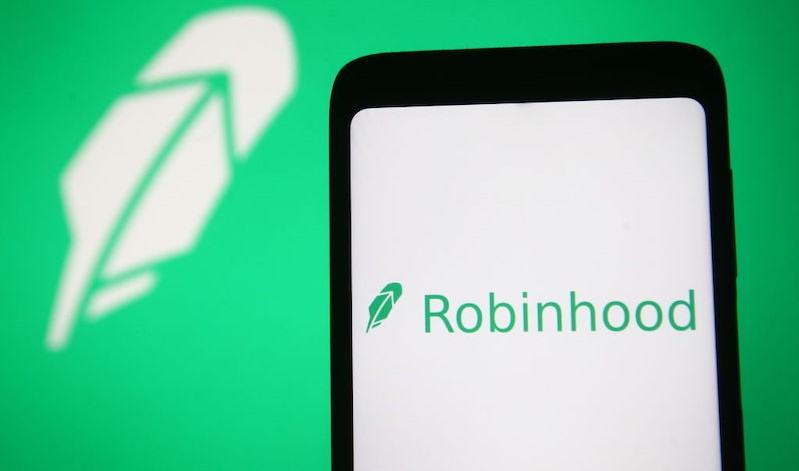
The gamification of financial trading apps should be cultivated, not criticized.
Remember when stock market trading was so easy that even a baby could do it? It appears that trading has gotten even easier.
Growing numbers of individual investors are now trading on their phones through app-based trading platforms offered by Robinhood Financial and a host of other new brokerages, such as Webull and Public. Although Robinhood first rose to prominence when it led the charge to zero-commission trading—an idea that became the industry standard in late 2019—the fintech startup has come under fire recently for leading the way in another innovation: the “gamification” of trading.
But what do commentators mean by gamification when they apply it to trading platforms? And how, if at all, should government officials regulate such platform design?
At its most basic, gamification means using game-like elements in non-game activities. This strategy is nothing new. Many industries have used gamification for decades to build brand loyalty and encourage consumption. Airlines, for example, created frequent flyer awards to engage better with consumers. Businesses also use gamification to educate, such as when companies provide their employees with interactive online training sessions.
Some critics warn that adding game-like design elements to trading platforms turns investing into an actual game that detrimentally influences investor behavior to the advantage of brokerages.
There is little consensus, however, as to which parts of these trading platforms are genuinely problematic. Critics have pointed to a host of diverse features of trading apps that gamify investing, including:
- Using vivid colors;
- Giving free stock for opening an account;
- Making transferred money instantly available for trading;
- Including social-media-style feeds;
- Awarding bonuses and hosting contests for referrals;
- Providing a variety of stock lists, including stocks popular on the trading platform or stocks related to the ones already owned by the investor;
- Sending “push notifications” to app users; and
- Using digital effects, such as the frequently referenced burst of digital confetti.
Despite this lack of consensus—or perhaps because of it—regulators are increasing their scrutiny of digital trading platforms. Although the U.S. Securities and Exchange Commission’s (SEC) current exam priorities only hint at the agency’s focus on digital apps by highlighting its plan to review compliance “around trade recommendations made in mobile applications,” SEC Chair Gary Gensler vowed during his confirmation hearing to study gamification and “behavioral prompts” used by investment apps. The Financial Industry Regulatory Authority’s (FINRA) current exam priorities are more explicit. FINRA identifies “digital platforms with interactive and ‘game-like’ features” as presenting “emerging digital communications risks” and lists of a host of regulatory requirements that may be applicable.
Massachusetts securities regulators have gone even further, filing a lawsuit against Robinhood claiming that the app’s use of gamification to encourage investors to use its trading platform violates Massachusetts law. The state’s complaint alleges that several elements of Robinhood’s trading platform—including “colorful confetti raining down” after executing a trade, the “promise of free stock to lure new customers,” and sending “push notifications to customers to encourage interaction with the application and trading”—facilitate “frequent, risky, and unsuitable trading” by customers. The complaint similarly alleges that Robinhood’s lists of “most-traded” and “most popular” securities encourage customers to purchase unsuitable securities.
Although Massachusetts holds brokers to a higher standard of care than federal regulators, both the Massachusetts fiduciary standard and the federal Regulation Best Interest standard are triggered by a broker’s trading recommendation. Yet, Robinhood denies that it is making recommendations to its users. Under existing rules, Robinhood likely is correct. Determining what qualifies as a “recommendation” depends on the facts and circumstances, but a recommendation generally is a call to action. The more tailored the communication is to a particular customer about a particular security, the more likely it is a recommendation. Netflix-style prompts—which send investors alerts that suggest they might like a stock because they bought a similar stock—come the closest to a particularized call to action. But few, if any, of the other so-called gamified elements remotely resemble recommendations.
Regulators are more likely to analyze app-based trading platforms under rules such as FINRA Rule 2210 that govern how brokers communicate with their customers. These rules are fairly broad and generally prohibit brokers from providing false, misleading, or otherwise unfairly presented information. Some portion of app-design, however, falls outside of typical broker communication and probably is not covered by existing regulations.
Policymakers should exercise caution when considering whether to impose new regulations on trading app design. Brokerages are in the business of getting customers to trade stocks. Drawing the right line between good marketing and abusive practices is difficult, if not impossible— especially without sufficient research on how app design influences investor behavior. Drawing that line is further complicated by the fact that, as one commentator put it, the “main dopamine payoff of the game is probably seeing if you made money.”
Making investing easy—or even fun—should not itself solicit a reflexive call for greater regulation. The past year has brought a surge of new investors into the markets, nearly half of whom accessed their new accounts primarily through a mobile app. Although a number of factors are likely at play, including zero-commission trading and the unique circumstances of the pandemic, the easy mobile trading apps have helped to attract new investors. Those new investors are younger, more diverse, and have lower incomes than those who previously had trading accounts. As SEC Commissioner Hester Peirce recognized, regulators must “be open to technological improvements that make the markets work better and encourage and equip more people to participate in them.”
Regulators should narrowly focus their efforts on limiting deceptive behavior by brokerages, rather than inhibiting modern app design that investors expect and which brokerages use to compete. Some design elements might cross a line, but regulators should not import holdover views about how trading should look or feel to the investor—particularly as younger investors begin to make their own investment decisions. And regulators should affirmatively recognize that gamified elements can play a role in educating investors.
We should celebrate technological advances that have made investing simpler and more attractive, not hamper them with regulatory requirements that micromanage trading interfaces and investor behavior.
Trading these days may not be easy enough for babies, but many new investors are finding it a lot easier than it was before. And that is a good thing for both investors and markets.
This essay is part of an 11-part series, entitled Regulation In the Era of Fintech.




